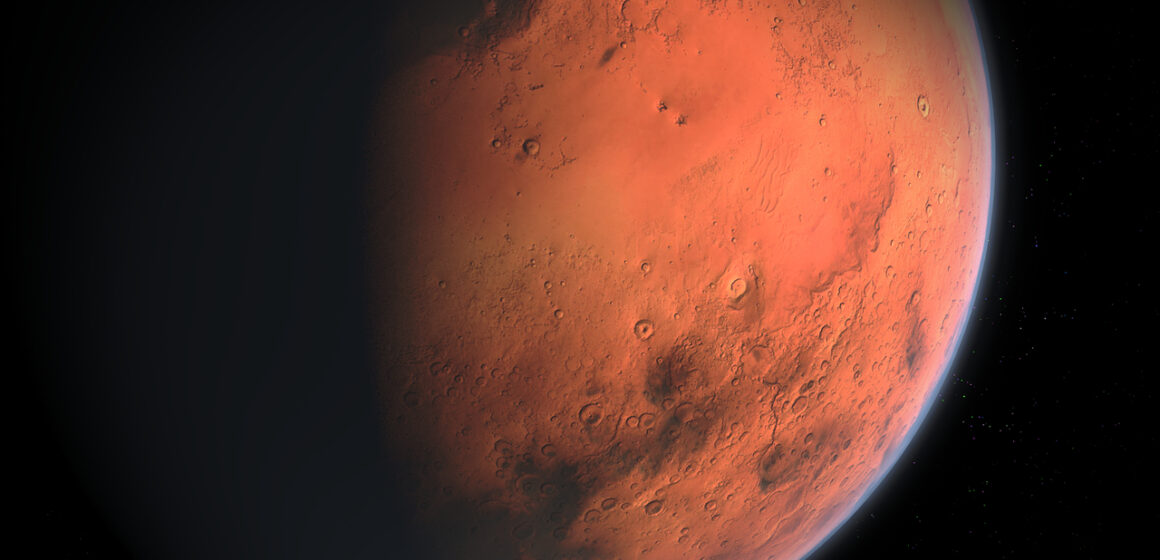NASA launched its Mars Habitat Mission to determine how humans could live on the planet.
NASA’s recent selection of four individuals for a one-year stay in a specially designed habitat on Mars, as reported by Devdiscourse, represents an important milestone in our quest to understand human existence on the Red Planet. The mission, announced on Twitter by NASA’s Johnson Space Center, is portrayed as an extraordinary space adventure on Earth. Located at the Johnson Space Center in Houston, this study seeks to lay the groundwork for upcoming one-year missions to Mars, shedding light on the challenges and opportunities of long-duration space travel.
The launch of the initial mission within the CHAPEA (Crew Health and Performance Exploration Analog) habitat marks the beginning of a three-part simulation series meticulously designed to replicate potential Martian conditions.
NASA has outlined a wide range of mission duties for the crew, including simulated spacewalks, robotic operations, habitat maintenance, personal hygiene, exercise and crop cultivation. With a focus on closely mimicking Mars, the team will contend with various environmental factors such as limited resources, loneliness, and equipment malfunctions.
Raina McLeod, deputy manager of the CHAPEA project at Johnson, explained that their focus is on studying the impact of realistic Mars constraints and crew members’ lifestyles on their performance and health.
To achieve this, they aim to create a simulated lifestyle by creating an environment and workload that closely resembles the conditions experienced by the CHAPEA crew. The goal is to gain valuable insight into crew adaptation and well-being in a realistic Mars-like environment.
Dr. Suzanne Bell, lead at NASA’s Health and Performance Laboratory, highlighted the thorough selection process for participants in the simulated Mars habitat. Ensuring their ability to work effectively in a team, the selected individuals were carefully selected with the expectation of achieving collective success. Bell emphasized that optimizing human health and performance during the mission remains the primary goal.
The names of the four brave scientists chosen for this historic mission have been shared by NASA, with Kelly Haston as commander, Ross Brockwell as flight engineer, Nathan Jones as medical officer and Anka Selariu as science officer. During a press conference, Vanessa E. Wyche, director of NASA’s Johnson Space Center, expressed gratitude to the dedicated teams who tirelessly made this mission possible.
Wyche emphasized the voluntary commitment of the crew members and conveyed his excitement regarding the scientific insights that will be gained from this mission, further preparing for future trips to Mars.
For centuries, mankind has been fascinated by the allure of Mars, attracted by its celestial mystique and proximity. With remarkable technological advances powering our progress, NASA is moving ever closer to making this long-standing fascination a tangible reality. The journey to Mars holds the promise of scientific discovery and unprecedented exploration, and serves as a testament to the extraordinary potential of human ingenuity.
Through these simulated missions, NASA continues to move forward, overcoming obstacles and bringing us closer to a groundbreaking breakthrough in human space exploration. Each mission provides invaluable lessons that reveal the mysteries of Mars while expanding the limits of human achievement in the vastness of space.
These daring endeavors epitomize humanity’s indomitable spirit as we fearlessly venture deeper into uncharted territory, driven by our collective desire to explore and understand the Red Planet, one simulation at a time.



